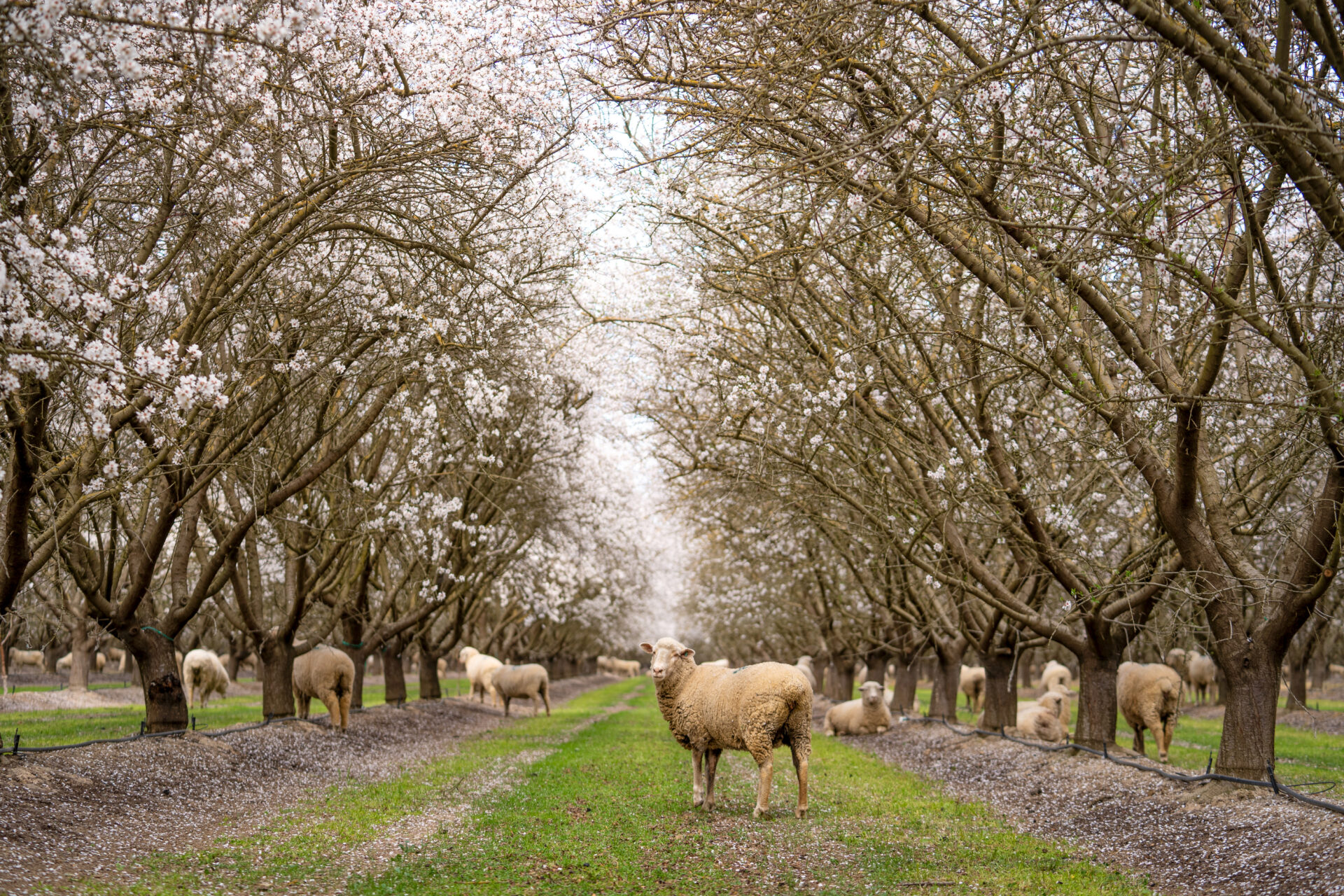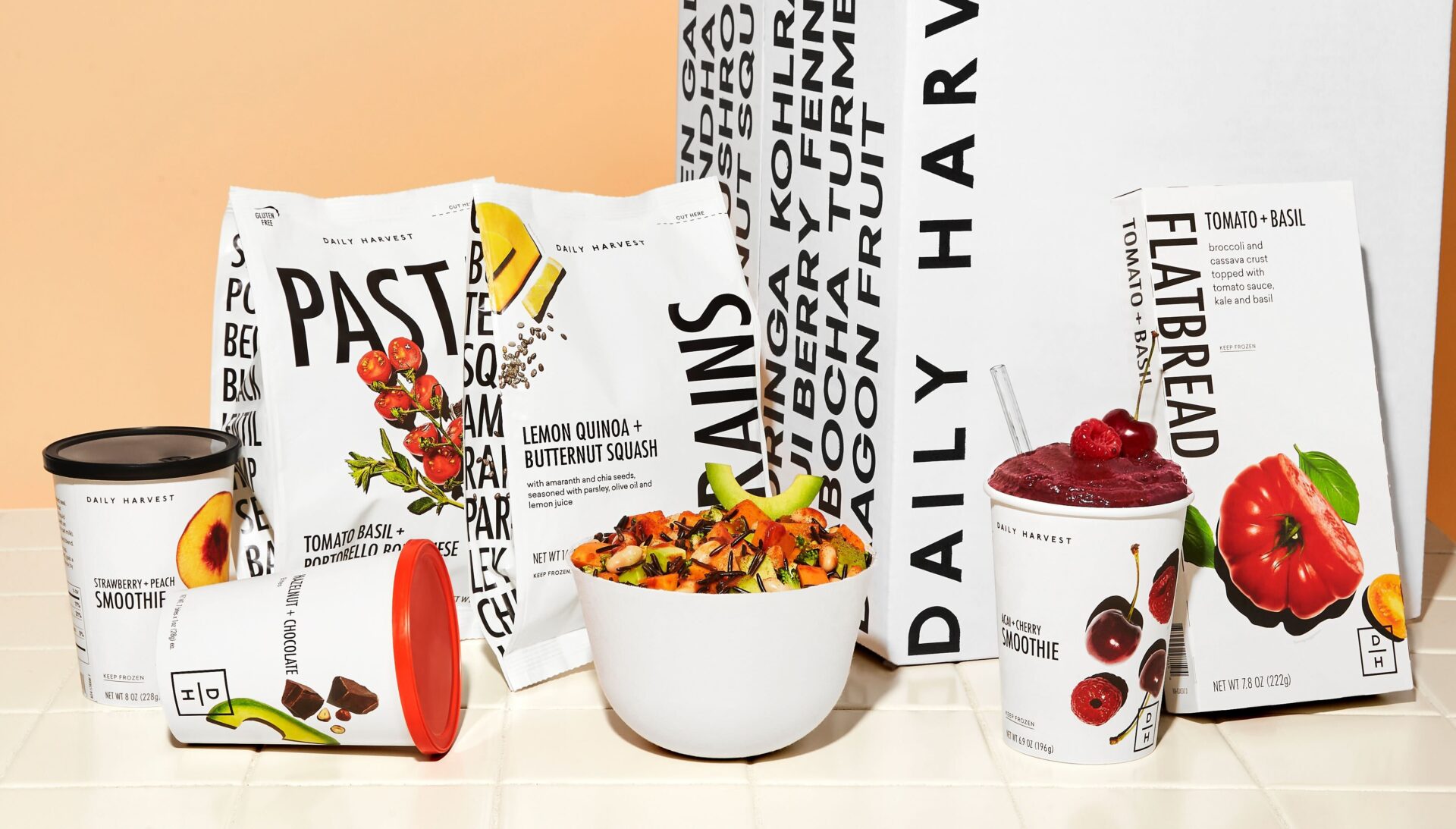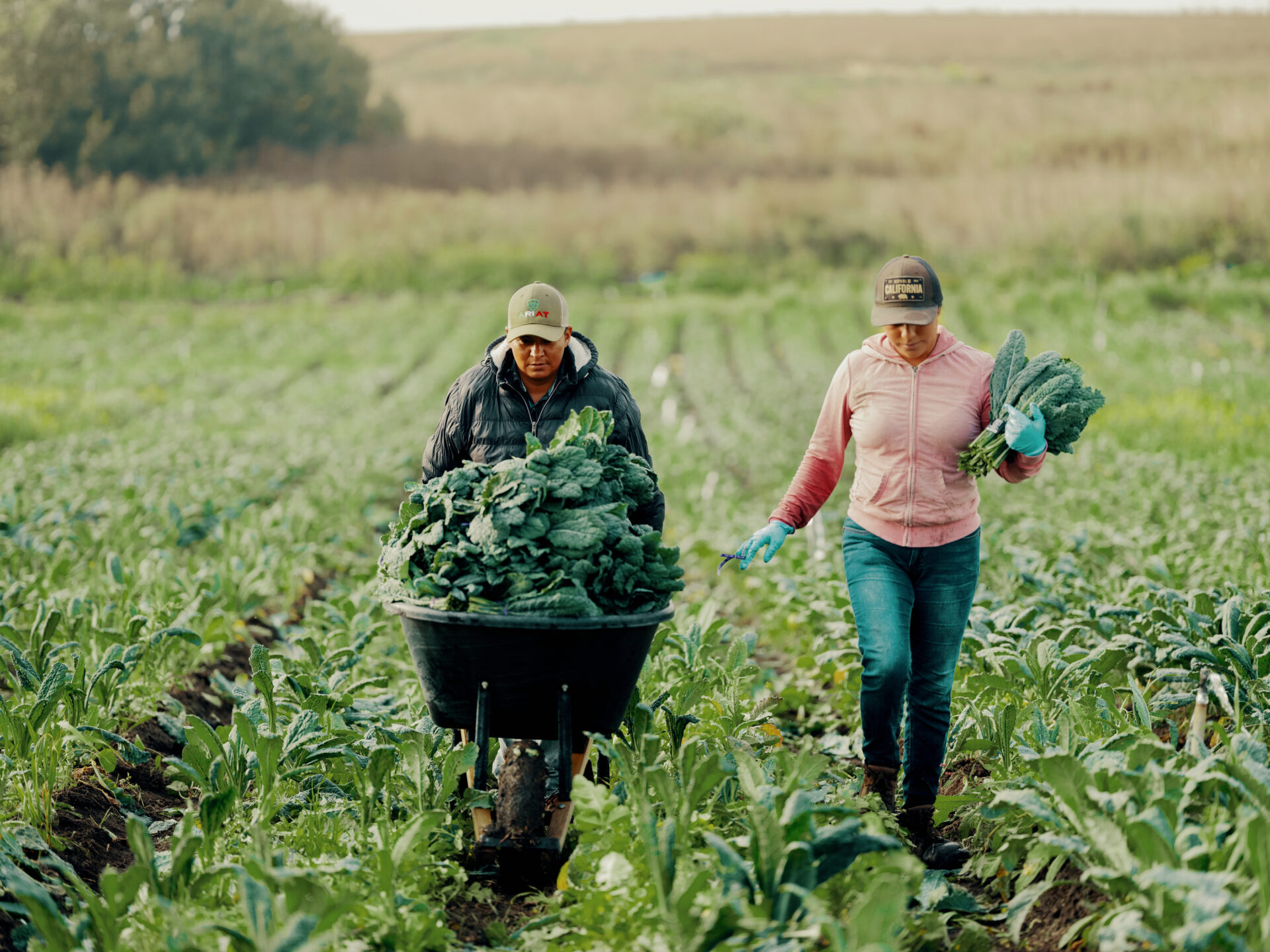Food companies and farmers alike often see regenerative and/or organic farming as a risky venture, so despite both phrases being common in food vernacular now, actual practices aren’t widespread. Just 1% of all US farmland is organic; acreage dedicated to regenerative is even lower.
“Everyone understands philosophically that these approaches are not new and are necessary for change,” says Daily Harvest CEO Ricky Silver. “The real challenge to get [projects] scaled and to get real investment behind them is to prove that they have a more immediate impact both in soil health and nutrient density.”
Since its inception, Daily Harvest, which offers frozen meals focused on healthy food and sustainably farmed ingredients, has always prioritized the direct connection between what people eat and how it’s grown, says Silver.
“There is no regenerative without organic,” he adds.
Over the last few years, the New York-based company deepened its involvement with helping more farmers transition to organic and regenerative practices, simultaneously illustrating what food companies can do to aid in the process.
This focus comes as Daily Harvest expands from being a subscription-only meal service to a company with a retail footprint as well, with products currently on shelves at Kroger, Harris Teeter, Wegmans, Costco, New Seasons Market, and Haggen.
Farmers wanting to transition to regenerative practices (cover cropping, no-till, etc.) often can’t because of the additional costs and operational changes involved. A typical transition takes about three years, during which time farmers must invest in new equipment and seeds, learn new practices, and likely face lower yields as the land readjusts.
“The farming community as a whole I think lives year-to-year in constant fear of what will happen in the market, the climate, in their unique plot of land,” Silver tells AgFunderNews. “Anything that adds newness and complexity is, not surprisingly, met with skepticism at the start.”
Transitioning more acreage to regenerative-organic takes “explaining the rationale and also helping everyone see that the risk is being shared,” he adds.
“It’s easy to sit in a office corporate office and say, ‘Farmers should really do X.’ What needs to happen both in public and private investment is to take the risk off the table as much as possible and show that you’re part of the journey.”

De-risking regen ag for almonds
Almonds a play a frequent role in Daily Harvest’s own meal lineup, which is vegan and gluten-free.
In 2022, Daily Harvest embarked on The Almond Project, a coalition of farmers, food brands and scientists that aims to identify almond farming practices that improve soil health and biodiversity as well as boost local farming communities in California, which grows roughly 80% of the world’s almond supply.
Silver says that Daily Harvest had previously been working with Treehouse, an almond ingredient company with deep ties to California’s almond farming community, to transition parts of the latter’s fields to organic from conventional. Daily Harvest paid a premium price for almonds that were not yet certified organic in order to offset farmers’ costs for the transition.
At the same time, he says, healthy food company Simple Mills had approached Treehouse about doing “a deep study around the actual implications of regenerative agricultural practices.”
The coalition began as a five-year a study that would show, on four different plots of land, “what happens when you take different approaches over time” around farming practices. One plot uses conventional, one organic, a third is farmed conventional but with regenerative practices, and a fourth with regenerative-organic.
Working the Treehouse and its third-generation farmers, the project is deploying soil health practices across 160 acres of almond farmland in California’s Central Valley.
Practices include multi-species cover crops, animal inclusion, increased compost application and reduced inputs like synthetic fertilizers. The project will monitor outcomes such as soil health, water infiltration, carbon sequestration, ecosystem biodiversity, and farm-level economics in comparison to neighboring farmland baselines, then eventually share the findings across the wider food industry.

Why almonds?
Of all the commodities to transition, says Silver, almonds have a benefit in that trees don’t have to be planted every year.
“Those trees are in the ground, so it lends itself well to transitional approaches, because there’s less risk of something happening to the land that would maybe require a shift in approach.”
He compares this to the example of lentil farmers in Montana that Daily Harvest has connections to. “Their biggest fear of doing more transition was that they have to do a number of rotations to stay in organic, and that new pests emerge over time. The risk profile of that transition period is even greater for them.”
The Almond Project also addresses some of the ongoing questions around almonds and whether they are good to grow because of water use challenges and other environmental concerns.
“It felt like an important, very large crop for California where we want to drive this kind of awareness and engagement, and there’s also a way to show that some of the inefficiencies can be improved upon by maintaining and building back soil health.”
Longer-term, The Almond Project aims to develop proof points that will incentivize both farmers and food companies to adopt regenerative practices.
Silver calls the project “one of our partnerships we’re most proud of. This is science that hopefully will help generate momentum in the almond farming community well past just Treehouse’s adoption. I think a lot of their farmers internally were skeptical but now have actually looked to kind of accelerate the adoption of some of the practices, even while the study continues, because they’re seeing the benefits.”

Serving the underserved through regenerative-organic farming
Daily Harvest has also entered year three of its project with the American Farmland Trust (AFT) and California Certified Organic Farmers (CCOF) to support small-scale BIPOC (Black, Indigenous, and People Of Color) farmers — an historically underserved group in agriculture — with transitioning to organic.
The multi-year program offers small, US-based BIPOC farmers technical resources like workshops and mentorships, financial assistance through grants, and opportunities for market access. For example, farmers may have the opportunity to join Daily Harvest’s supply chain.
“The partnership has had an impact in terms of the number of grantees we’ve been able to support and pushed forward the conversation around creating markets for these farmers beyond just fresh organic,” says Silver. “The frozen market that we operate in is super interesting for farmers to participate in, but it’s hard to leverage those smaller farmers because you have bring that volume together and process it at a much higher rate.”
He adds: “In year three, we are spending a lot of time in conversation around those challenges and trying to understand what models might need to be built to scale things up. It’s not straightforward.”
Connecting regen ag with human health
Daily Harvest was built on the concept of offering a huge range of fruits, vegetables and other foods to consumers across all the different meals and snacks in a typical day.

The model comes with both challenges and opportunities, suggests Silver.
“We buy a large number of commodities, and in some cases, a small volume of a large number of commodities. So making an impact at the farm level or at the commodity level when you have that complexity is difficult.”
“We have tried to find a range of projects and partnerships that either impact a commodity we buy a larger percentage of, [which gives] us power to make an impact, or [we buy] commodities that have a great deal of capacity outside the Daily Harvest system and are really critical for the types of regenerative organic practices that need to come to market.”
Millet is one example. Daily Harvest does not buy enough millet to be “a leader of change in the millet world,” says Silver.
“But we are big believers that millet has a really important role to play in the future of regenerative grain. Therefore, we’ve taken on multiple attempts in the last few years to work with smaller farmers to build out the regenerative-organic commitment in that space.”
“Sometimes you need brands to be a spark to generate momentum with partnership to scale. In this world, where everyone’s jumping onboard the [regen-organic] train, we’re trying to take a step back and say, ‘What unique role should we play’?”
A big part of that role is “not losing sight of the connection between these practices and soil health and the quality of the food we’re consuming.”
He says while this connection between human health and regenerative agriculture is “the Holy Grail,” it’s a difficult vision to communicate in a way that resonates with everyone involved, from farmers to food companies to consumers.
“We’ve focused a lot on the regen ag side today, but I think it’s all in service of [finding] ways towards better food for people to eat. We can’t lose sight of that.”




